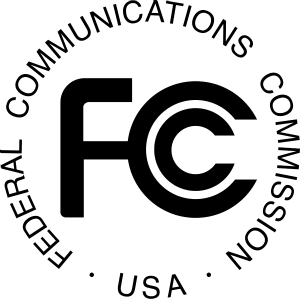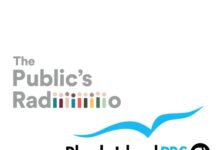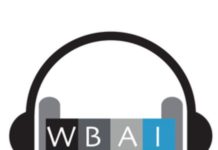
Radio regulatory fees are being jacked up by The FCC and the NAB wants the Commission to explain why. In comments filed Monday the trade organization says the data does not support the 18-20% increase on radio, especially in light of the FCC budget which is only increasing 5.3%, and flawed methodology The Commission is using to calculate the fees.
The NAB says the NPRM’s inexplicable decrease in radio fee payment units of nearly 800 radio stations from 2018 is inaccurate and reflects a flawed methodology for calculating radio stations. “The NPRM’s baffling reduction of nearly 800 payment units in the radio industry and subsequent hike in regulatory fees is based on flawed data. As NASBA ( Named State Broadcasters Associations ) notes, this makes little sense as the number of radio payment units in 2019 dropped dramatically from the “relatively steady number” of units in the past six years. As a result, remaining stations must shoulder a larger share of fees allocated to the radio industry. For example, the number of AM Class B stations decreased by 8.8 percent and the number of AM Class D stations decreased by a whopping 16.5 percent. The NPRM bases its calculations on 9,528 radio payment units for 2019, which bears no relation to published data from the Media Bureau reporting 11,363 radio payment units within the same time frame. The NPRM merely issues a chart of sharply higher regulatory fees for radio, without attempting to explain this discrepancy and forcing commenters to theorize about potential explanations. Perhaps the stations lost their way in the Bermuda Triangle, or disappeared in a “Sudden Departure.”
The NAB asks if the fees not being paid by stations are being forced on those who do pay. “NAB earlier discussed the possibility that the sharp decrease in payment units may be partially due to the removal of stations that did not pay their regulatory fees in 2018. If true, this fundamentally unfair system would reward delinquent stations by forcing compliant stations to subsidize fees while these stations continue operating and retaining their licenses. Clearly, the Commission should not punish broadcasters who responsibly remit their regulatory fees.”
Could it be more non-profits the NAB asks? “NASBA suggests that some of the discrepancy could be due to radio stations falling into a fee-exempt category such as non-profit entities holding commercial radio licenses. However, as NASBA states, “for that to explain the entire difference would require that one out of every six commercial radio stations in the country be licensed to a non-profit entity.” This is simply not the case; yet, due to the NPRM’s opacity, we are forced to base our comments on conjecture. In any event, NASBA makes a worthy point. Non-exempt regulatees should be responsible for paying their allocated regulatory fees, but the FCC’s costs to regulate fee-exempt broadcast stations should be borne by all Commission regulatees instead of only Media Bureau regulated entities, or worse, by other broadcasters alone.”
The NAB says it is simply asking the Commission to show its homework by explaining its calculations of the radio regulatory fees, instead of merely issuing a chart of final fees. “It is frustrating that the Commission has not seen fit to issue an interim public notice or some other document with additional data that could help inform stakeholders’ responses to the NPRM. Given the apparent inaccuracy of the NPRM’s count of radio station fee payors, and the lack of information and clarity, affected parties are simply unable to provide meaningful input into the regulatory fee process.”
Read the entire NAB filing HERE.






Just another example of keeping the masses confused, frustrated and frightened as illustrated so many times by the Coalition for Transparency, Clarification and Simplification of Regulations Pertaining to American Broadcasting(r). “As regulations grow, freedoms die.” — From a road sign near Worland, Wyoming.
Congress has charged the FCC with the assignment to distribute hundreds of millions of dollars over the next ten years to contractors to build out high speed internet infrastructure. In our area, the first funds have been handed out last week. Just wonder if any of this money is coming from regulatory fees? Just a thought, but I wish the FCC might be a little more transparent about operations and motives. I had best say no more.
Every single radio station, including non-profit and ‘tax exempt’ operators, should be paying a minimum annual fee. All licensed stations have de facto ‘skin in the game’, in that they benefit from FCC enforcement measures that protect them from interference from other broadcast outlets, whether those other stations are legitimately licensed or, especially, in the case of pirate operators. And, in this era of efficient, computerized billing and payment, there should be no exemption for operators whose annual fees are less than $1,000.
Finally, how absurd and unfair is it that the scofflaw operators and licensees, who are delinquent in their annual fee payments, should be subtracted from the calculation of fees to be paid by operators who obey the rules and make their required annual payments? To me, this is somewhat analogous to private sector retailers who pass the cost of ‘shrinkage’ — i.e., theft — onto other consumers, to make up for the loss. In this case, if a station operator has gotten too far behind in payment of its annual fees, then that licensee should be forced by the FCC to cease operations until payments are made in full, with reasonable penalties and fees. In reality, if an operator is not generating enough revenue to pay its annual regulatory fees, it will, at some point, cease to exist, anyway.
Again, those of us who play by the rules find yet another reason to lose confidence and respect for the government agency that demands full and timely compliance from us. Play fair, FCC and Chairman Pai.
An ongoing problem with the FCC’s fee structure is that–on a cost per thousand basis–the smaller market stations pay more than their big city cousins. True–the very smallest stand alone stations are exempt from fees if the total fee is less than $1K (which might explain a few of the “missing” stations the NAB can’t find). But the rest of us–like most middle class taxpayers–bear the bulk of the tax burden.